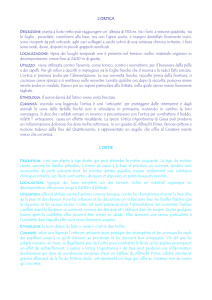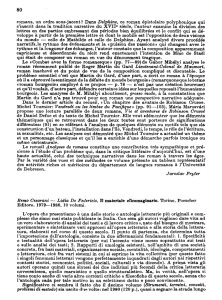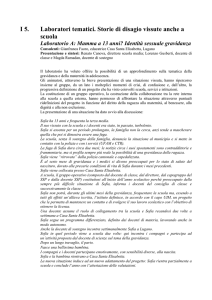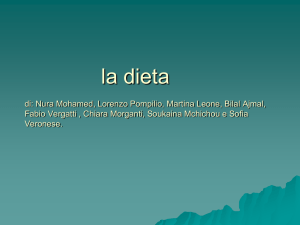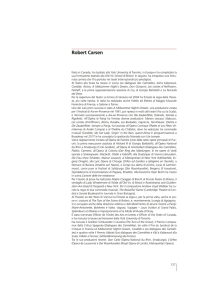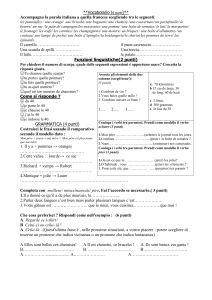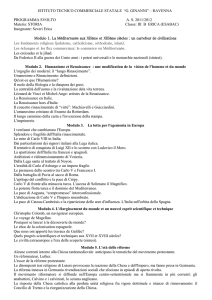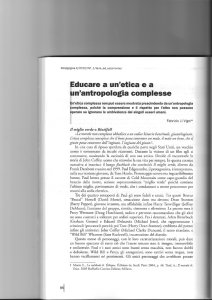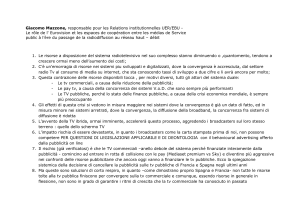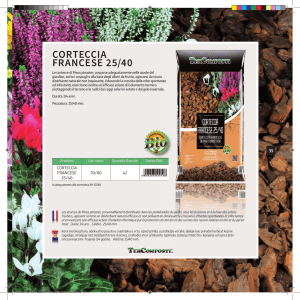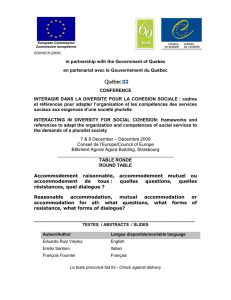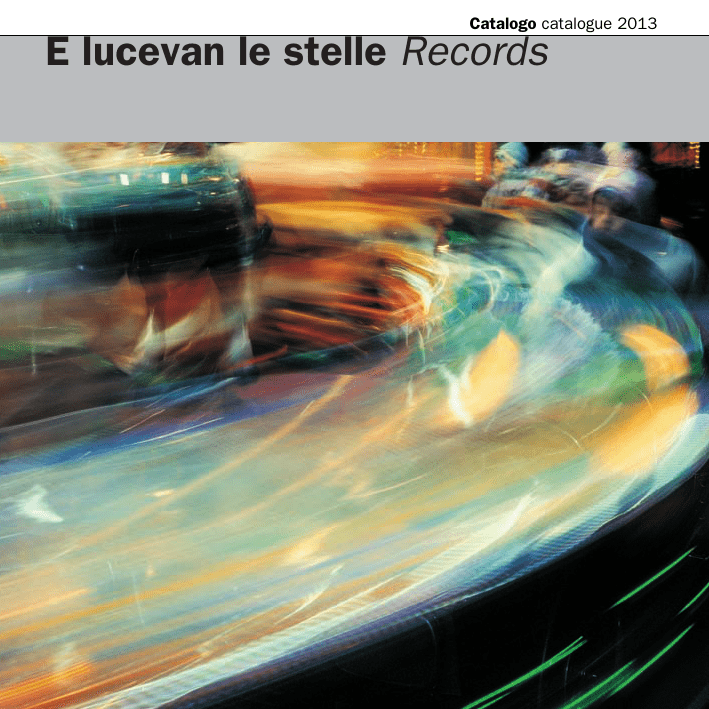
Catalogo catalogue 2013
E lucevan le stelle Records
E lucevan le stelle records
Catalogo catalogue
E Lucevan Le Stelle
Records
E lucevan le stelle records
E lucevan le stelle Records è una casa discografica che si occupa
esclusivamente di musica antica con l'intento di restituire oggi in prima
registrazione mondiale, musiche sepolte dal tempo. Si avvale di qualificate collaborazioni che garantiscono valore critico, filologico ed espressivo
ad ogni incisione. Ogni produzione E lucevan le stelle è pertanto unica nel
suo genere. Affidate ad artisti di altissimo livello e realizzate con strumenti
originali, le incisioni E lucevan le stelle vengono realizzate in luoghi storici
coevi alle musiche incise con l'uso di due soli microfoni collegati direttamente ad un registratore. La presa del suono e la conseguente masterizzazione vengono realizzate in stretta collaborazione con gli artisti, al fine
di restituire intatta la purezza del suono originale in ogni sua peculiarità.
Per un ascolto soave, senza tempo.
E
lucevan
le
stelle
Records
est
une
Maison
d’Editions
Discographiques qui s’occupe exclusivement de musique ancienne dans
l’intention d’offrir de nouveau de nos jours, en premier enregistrement
mondial, des musiques ensevelies par le temps. Elle se sert de collaborations qualifiées qui garantissent une valeur critique, philologique et
expressive de valeur à tous ses enregistrements. Chaque production E
lucevan le stelle est donc unique en son genre. Confiés à des artistes de
très haut niveau et réalisés grâce à des instruments originaux, les enregistrements E lucevan le stelle sont réalisés dans des lieux historiques qui
correspondent à l’époque des musiques enregistrées, en utilisant seulement deux microphones reliés directement à un magnétophone. La prise
du son et la duplication qui la suit sont réalisées en étroite collaboration
avec les artistes afin que la pureté du son original soit offerte de nouveau
d’une façon intacte et avec toutes ses caractéristiques. Pour une écoute
douce, hors du temps.
E lucevan le stelle Records is a record company working solely in the
field of early music, with the aim of bringing music buried by time back to
life today, in the world’s first recordings. Its fine musicians and expert advisers ensure that every recording is of outstanding critical, philological and
expressive value. Featuring top-rank artists and using period instruments,
E lucevan le stelle recordings are made in close collaboration with the performers in order to reproduce every unique detail of the original sound
intact. For magical, gentle, timeless listening.
12 Concerti per l’organo
CD EL 942301
Musiche di
Pietro Morandi
Marco Mencoboni
Organo
go to download
Le note di questi concerti provengono da un manoscritto conservato
in una biblioteca privata di Assisi. L’organo, trattato come un’orchestra,
imita con straordinari effetti mimetici il suono dell’oboe, del flauto, della
voce umana, di trombe e corni da caccia. Il manoscritto, ritrovato casualmente, non presentava prima del nostro sopralluogo, nessun segno di studio e per questo questa incisione è un contributo importante alla definizione della prassi esecutiva organistica del ‘700 italiano. Eseguito allo
strumento Callido di Corinaldo (apprezzato e più volte suonato da Pietro
Morandi), restituisce fedelmente la maestosa dimensione sonora e compositiva dell’organo settecentesco. Un ascolto di inaspettata bellezza.
Les notes de ces concerts proviennent d’un manuscrit conservé dans
une bibliothèque privée d’Assise. L’orgue, utilisé comme un orchestre,
imite, grâce à des effets mimétiques, le son du hautbois, de la flûte, de
la voix humaine, de trompettes et de cors de chasse. Le manuscrit, retrouvé par hasard, ne présentait avant notre examen aucun signe d’étude;
c’est la raison pour laquelle cet enregistrement contribue de manière
importante à la définition de la pratique d’exécution de l’orgue au dix-huitième siècle en Italie. Exécuté sur l’instrument Callido de Corinaldo (apprécié et joué à plusieurs reprises par Pietro Morandi), il rétablit d’une façon
fidèle la majestueuse dimension sonore et de composition de cet orgue
du XVIIIème siècle. Il s’agit d’une écoute d’une beauté inattendue.
The music (notes) of this concerts comes from a manuscript kept in
a private library in Assisi. The organ conceived as an orchestra, imitates
the sound of the oboe, the flute, the human voice, the trumpets and hunting-horns with extraordinary mimetic effects. Before our examination, this
manuscript, discovered by chance, showed no signs of having been studied and therefore this recording is an important contribution for defining
Italian 18th-century organ-playing practices. Played on a Callido instrument
in Corinaldo (really appreciated and often played by Pietro Morandi) it gives
back the XVIIth organ majestic acoustic and lyric dimension true to the original. A listening.
Musica nelle Marche al tempo del Ridolfi
CD EL 942302
Musiche di
Battiferri, Donati,
Pellegrini.
Sacro & Profano
Marco Mencoboni
go to download
Un’esauriente selezione del ‘600 musicale marchigiano, replicata con
la tecnica del cantar lontano, che vede i cantati disposti a distanza nello
spazio. I mottetti sacri di Ignazio Donati e quelli spirituali di Pietro Pace con
musiche di Luigi Battiferri, si uniscono in composizioni innovative e, per l’epoca, persino spiazzanti. Questa incisione discografica rappresenta il
debutto discografico del complesso Sacro & Profano che ha in questa
occasione sperimentato, un approccio fortemente innovativo, cogliendo
l’opportunità offerta dall’interpretazione di musica mai eseguita in epoca
moderna. In questo disco, cui è stato assegnato il premio CD Audiophile
della rivista Fedeltà del Suono, incontrerete momenti di vera suggestione.
Une sélection complète du XVIIème siècle musical des Marches, répétée en employant la technique du cantar lontano, dans lequel les chanteurs sont distanciés dans l’espace. Les motets sacrés d’Ignazio Donati
et les motets spirituels de Pietro Pace avec les musiques de Luigi Battiferri
s’unissent pour former des compositions innovatives et même déplacées
pour l’époque. Cet enregistrement discographique représente le début de
l’ensemble Sacro & Profano qui a, dans cette occasion, expérimenté une
approche fortement innovatrice, saisissant l’opportunité offerte par l’interprétation d’une musique qui n’avait jamais été exécutée à notre époque. Dans ce disque, auquel le prix CD Audiophile de la revue Fedeltà del
Suono a été accordé, vous vivrez des moments de suggestion vraie.
An exaustive XVIIth century musical selection from the “Marche”, long
run with the “Cantar lontano” technique (to sing at a certain distance from
each other). The mottetti from Ignazio Donati and Pietro Pace, with the
music of Luigi Battiferri, join together in new compositions even bewildering for that time. This recording marks the debut of the Sacro & Profano
group, who on this occasion experimented an extremely innovative
approach, taking this opportunity provided by performing music never before played in modern times. This record has been awarded with the “CD
Audiofile” by the Italian magazine “Fedeltà del Suono” and it will give you
moments of rare suggestion.
O dulcissima Maria
CD EL 952303
Musiche di
Pietro Pace
Sacro & Profano
Marco Mencoboni
go to download
Pietro Pace, maestro di canto e di musica della duchessa Eleonora
della Rovere a Pesaro, le dedica questi mottetti in occasione della sua
misteriosa e improvvisa clausura con il nome di Suor Maria. Celate in un
velo di profonda ambiguità, Pietro Pace disegna composizioni per l’esecuzione sacra, in cui sensualità e spiritualità si alternano e si confondono.
Breve nota di cronaca: registrato nel monastero del SS. Salvatore di
Fucecchio, vicino Firenze, che conserva intatto lo splendido organo cinquecentesco di Cesare Romani, le monache nostre ospiti hanno passato
notti insonni a ‘spiare’ la densa bellezza evocativa di queste note ispirate
da un amore puro e impossibile.
Pietro Pace, maître de chant et de musique de la duchesse Eleonora
della Rovere à Pesaro, lui dédie ces motets lors de son entrée en clôture,
mystérieuse et subite, en prenant le nom de Soeur Marie. Cachées derrière un voile d’ambiguïtè, ces compositions, dans lesquelles la sensualité et la spiritualité s’alternent et se confondent, sont réalisées par Pietro
Pace pour l’exécution sacrée. Brève note de chronique: l’enregistrement a
eu lieu dans le monastère SS. Salvatore de Fucecchio, près de Florence,
où est conservé, intact, le magnifique orgue du Seizième siècle de Cesare
Romani, les religieuses qui nous ont accueillis ont passé des nuits blanches à “épier” la beauté dense et évocative de ces notes inspirées par un
amour pur et impossible.
Pietro Pace, music and singing master of the Duckes Eleonora Della
Rovere of Pesaro, dedicates these mottettos to her on occasion of her
mysterious and unexpected reclution with the name of Suor Maria.
Concealed by a veil of profound ambiguity, Pietro Pace signs compositions
for sacred performances, where sensuality and spirituality mingle and
alternate. A brief comment: recorded in the monastery of Saint Salvatore
di Fucecchio, near Florence, which preserves intact Cesare Romani’s
splendid 16th-century organ, the monks hosting us spent sleepless nights
‘spying’ on the intense evocative beauty of the these notes inspired by a
pure and impossible love.
Sonate sinfonie e pastorali per organo
CD EL 952304
Musiche di
Giovanni Morandi
Marco Mencoboni
organo
go to download
Considerato il più virtuoso organista dell’Ottocento, Giovanni Morandi
è stato maestro di Gioachino Rossini, che iniziò all’opera. Sigillo di questa
intensa collaborazione la moglie di Morandi Rosa Morolli: una delle cantanti più apprezzate da Rossini. I tre attraversarono l’Europa del
Romanticismo per ‘servire musica’ con grande entusiasmo e vitalità. Triste
epilogo la prematura morte di lei, che lascia un segno indelebile nel profilo del grande musicista Morandi che, a lei, dedicò tutta la sua musica.
Registrato in prima incisione moderna con il suono del bellissimo organo
Callido di Macerata, questo CD restituisce fedelmente lo spessore della
scrittura morandiana e dunque gli apici della composizione per organo del
XIX Secolo.
Considéré l’organiste italien le plus virtuose du XIXème siècle,
Giovanni Morandi a été le maître de Gioachino Rossini, qu’il initia à l’opéra. La femme de Morandi, Rosa Morolli, représente le sceau de cette collaboration intense: elle fut une des chanteuses d’opéra que Rossini apprécia le plus. Les trois personnages traversèrent l’Europe du Romantisme
pour “servir la musique” avec beaucoup d’enthousiasme et de vitalité.
Triste épilogue, la mort prématurée de Rosa Morolli, qui laissa un signe
indélébile dans le souvenir du grand musicien Morandi qui lui dédia toute
sa musique. Enregistré dans une première incision moderne avec le son
du très bel orgue Callido de Macerata, ce CD redonne fidèlement l’épaisseur de l’écriture de Morandi, et, par conséquent, les plus hauts niveaux
de toute composition pour orgue du XIXème siècle.
Considered the most virtuoso organist of XIXth Century, Giovanni
Morandi has been the master of Gioacchino Rossini, whom he initiates into
the opera. Morandi’s wife Rosa Morolli, one of the most appreciated
Rossini singer, was the seal of this intensive collaboration between
Morandi and Rossini. They all travelled throughout the romantic Europe to
“serve music” with great vitality and enthusiasm. Unfortunately she prematurely dies and this sad epilogue leaves an indelible trace in the personality of this great musician, who dedicated all his music to her. This CD,
recorded in the first modern recording production on the beautiful Callido
organ in Macerata, gives back the value of Morandi’s writing true to the original and therefore the culminating point of organ composition in XIXth
Century.
J’ay pris amour
CD EL 962305
Musiche di
Anonimo,
Spinacino
Andrea Damiani
liuto
go to download
Da un manoscritto straordinario, a forma di cuore, emerso dalla biblioteca Oliveriana di Pesaro. Siamo nel 1400. Non sappiamo chi scrisse queste meravigliose pagine musicali, un viandante, un poeta innamorato, un
principe? Perché e quale uso fu fatto di queste partiture?
Quali segreti nasconde ancora oggi questo misterioso libro? Questa
la sostanza delle partiture calligrafate nella sottile filigrana del cuore e
riproposte nel CD. Diffusa ad libitum nella sala del Metropolitan Museum
di New York che conserva lo studiolo di Gubbio del duca Federico da
Montefeltro. Poche parole per commentare questa musica: sentire e risentire senza mai finire. Un disco da possedere nell’estasi d’amore.
D’un manuscrit extraordinaire, en forme de coeur, provenant de la
bibliothèque Oliveriana de Pesaro. Nous ne connaissons pas l’auteur de
ces merveilleuses pages musicales, était-ce un pèlerin, un poète amoureux, un prince? Pour quelle raison et dans quel but ces partitions furentelles composées? Quels secrets ce mystérieux livre cache encore aujourd’hui? Voilà l’essence des partitions calligraphiées sur la filigrane fine du
coeur et proposées de nouveau dans ce CD. Diffuse ad libitum dans la
salle du Metropolitan Museum de New York qui conserve le petit cabinet
de travail de Gubbio du duc Federico de Montefeltro. Peu de mots pour
faire le commentaire de cette musique: écouter et écouter sans jamais
s’arrêter. Un disque à posséder dans l’extase d’amour.
From an extraordinary manuscript, heart-shaped, found in the
Oliveriana Library in Pesaro. It dates back to the XVth century. We have no
idea who wrote these wonderful pages of music; a wayfarer, a poet in love,
a prince perhaps? Why? And what were these scores used for? What
secrets does this mysterious book still hide today? This is the theme of
the hand-written scores in the thin watermark of the heart and reproposed
in CD version. It has been divulged “ad libitum” in the hall of the
Metropolitan Museum in New York that preserves the “studiolo” of Gubbio
of the Duke Federico Da Montefeltro. A short comment for this music: listening on and on with no end. A record to have by you in the ecstasy of love.
This CD has been produced within the project “Suoni ed Invenzioni del
Barocco Ducale”.
La musique dangereuse
CD EL 972306
Musiche di Royer,
Rameau, Couperin
Marco Mencoboni
clavicembalo
go to download
22 brani per clavicembalo tra amore e follia. In un CD carico di sensualità, le promesse del piacere nell’universo erotico del Settecento. La
dissolutezza, la voluttà, l’ossessione che conducono alla perdita di sé.
Dietro l’astratta materia della musica che svela e insieme nasconde, le
vette più alte e inaccessibili delle rischiose passioni di un secolo.
Registrato nella sala del cardinale di Villa Medici a Roma, sul clavicembalo storico di proprietà dell’Accademia di Francia, questo disco restituisce
con il languore melanconico il più sfrenato virtuosismo tipico dei grandi clavicembalisti francesi. Da Couperin a Royer, passando per l’eleganza inarrivabile di François Couperin. Ascoltare per credere.
22 morceaux pour clavecin entre amour et folie. Dans ce CD plein de
sensualité, les promesses du plaisir dans l’univers érotique du XVIIIème
siècle. Enregistré dans la salle du cardinal de Villa Medici à Rome sur le
clavecin historique appartenant à l’Académie de France, ce disque restitue
avec une langueur mélancolique la virtuosité la plus déchaînée des grands
clavecinistes français. De Couperin à Royer, en passant par l’élégance
incomparable de François Couperin. La débauche, la volupté, l’obsession
qui mènent à la perte de soi-même. Voilà, derrière la matière abstraite de
la musique qui dévoile et en même temps cache, les cimes les plus hautes et inaccessibles des passions périlleuses d’un siècle. Ecouter pour
croire.
22 passages for harpsichord between love and folly. In a CD rich in
sensuality, the pleasure promises in the erotic universe of XVIIIth century.
Recorded in the cardinal’s hall at Villa Medici in Rome, using a historical
harpsichord owned by the Académie française, this recording restores to
us the melancholic languor, the most unbridled virtuosity typical of the
great French harpsichord players, ranging from Couperin to Royer, including
François Couperin’s incomparable elegance. The voluptuousness and
obsession that lead to self-denial. Behind the abstract stuff of music that
unveils and hides at the same time, the inaccessible peaks of the risky
passions of that century. Listen and see.
Musica a Palazzo Ducale
CD EL 972307
Anonimo, Pace,
Donati, Barbarino.
Sacro & Profano
Marco Mencoboni
go to download
Composte da autori marchigiani al seguito di una delle corti più celebrate del Rinascimento italiano, il CD ripropone musiche nate in questi luoghi per questi luoghi. Un patrimonio inedito che viene oggi restituito in
un’incisione con strumenti originali da interpreti di altissimo livello. Le
atmosfere create per l’intimità e i fasti dei duchi di Montefeltro, sono di
nuovo vostre in un ascolto magico, soave, senza tempo. Questa incisione,
prodotta nel 1997 in collaborazione con la Soprintendenza ai Beni Artistici
e Storici di Urbino, viene diffusa regolarmente all’interno del Palazzo
Ducale di Urbino e rappresenta il primo caso di colonna sonora originale
realizzata per la visita ad un monumento storico.
16
Composé par des auteurs des Marches à la suite d’une des cours les
plus célèbres de la Renaissance italienne, ce CD propose de nouveau des
musiques nées dans ces lieux, pour ces lieux. Un patrimoine inédit qui est,
aujourd’hui, rendu dans une incision avec des instruments originaux par
des interprètes de grande valeur. Les atmosphères crées pour l’intimité et
les fastes des ducs de Montefeltro sont de nouveau les vôtres lors de l’écoute magique, suave, hors du temps. Cet enregistrement, réalisé en
1997 en collaboration avec La Direction des Biens Culturels et Artistiques
de Urbino, est transmis régulièrement à l’intérieur du Palais Ducal de
Urbino et représente le premier cas de bande sonore originale réalisée
dans l’occasion de la visite à un monument historique.
Composed by Marchegian authors at one of the most celebrated
courts of the Italian Renaissance, this CD proposes music born in these
places for these places. An unpublished heritage that has been today revived in a recording made with the original instruments by top-artists. The
atmosphere created for the intimacy and the pomp of the Dukes in
Montefeltro is given back to you in a magic, pleasant, evergreen listening.
This recording, produced in 1997 in co-operation with the Superintendency
for Artistic and Historical Heritage in Urbino, is regularly played inside the
Ducal Palace in Urbino and is the first soundtrack ever created for visits to
a historical monument.
17
Quella vermiglia rosa
CD EL 982308
Musiche di
Bartolomeo
Barbarino
Sacro & Profano
Marco Mencoboni
go to download
Attivo nelle Marche e nel Veneto del primo ‘600, Barbarino è uno dei
compositori più interessanti dell’epoca barocca. Egli fonde il gusto del
meraviglioso tipico del periodo, con una vena di fantasiosa vitalità, alternando emozioni che si rincorrono e sovrappongono vertiginosamente.
Duttile, la voce segue, e musicalmente, nettamente, individua vigoria
e snodi verbali, con procedimenti continuamente mutevoli: si avventura in
cascate di rapide note e in tumultuosi giri e arcate di suoni; assapora lunghe note in passi cromatici e poi si abbandona spesso, ad ampie sequenze di melismi lussureggianti e a ritmi di canzonetta, leggiadri ed ariosi.
18
Actif dans les Marches et dans la Vénitie au début du XVIIème siècle,
Barbarino est l’un des compositeurs les plus intéressants de l’époque
baroque. Il fonde le goût du merveilleux typique de cette époque, avec une
veine de vitalité pleine de fantaisie, en alternant les émotions qui se cherchent et se superposent vertigineusement. Docile, la voix suit, et musicalement, nettement, elle identifie la vigueur et les articulations verbales,
avec des procédés qui changent sans cesse: elle s’aventure dans des
cascades de notes rapides et dans de tumultueuses évolutions de sons ;
elle savoure de longues notes dans des pas chromatiques puis s’abandonne souvent à d’amples séquences de mélismes exubérants et à des
rythmes de canzonette gracieux et tenant de l’arioso.
In full activity in Marche and Veneto in the first decades of the XVIIth
century, Barbarino is one of the most interesting composers of the
Baroque. He mingles the pleasure of “the marvellous” typical of that time
with a streak of witty vitality. The voice must trace out these passions and
with musicality alone untie the verbal knots of tangled emotion, it must be
ductile and flexible. The voice must brave cascades of falling notes, then
master tumultuous twists and flourishes; it must savour the long notes of
a chromatic scale, then rush through a declamation of short, rapid figures.
Sometimes the singer must lend himself to long passages of honeyed luxuriousness, or to the light, airy, accented rhythms of the canzonetta.
19
Vola de Libano
CD EL 982309
Musiche di
Luigi Battiferri
Roberta Invernizzi
soprano
Sacro & Profano
Marco Mencoboni
go to download
Poche sono le notizie che possediamo sulla giovinezza e i primi studi
del musicista e compositore Luigi Battiferri, nato a Sassocorvaro nell’aprile del 1614. I suoi bellissimi mottetti a voce sola, pubblicati nel 1669,
si contraddistinguono per uno stile estremamente libero, di ampio respiro,
con frequenti cambiamenti di tempo, effetti d’eco, rallentando e accelerando, una forma insomma più vicina al libero stile della nascente monodia accompagnata, in cui tanta parte avevano gli “affetti”. Le potenzialità
vocali sono esplorate e sfruttate al massimo, le invenzioni melodiche sempre fresche e vivaci: vi traspare una creatività versatile, pronta ad adattarsi alle esigenze dello stile contingente con solido mestiere.
20
Peu sont les informations que nous possédons sur la jeunesse et sur
les premières études du musicien et compositeur Luigi Battiferri, né à
Sassocorvaro en avril 1614. Ses très beaux motets à une seule voix,
publiés en 1669, se distinguent par un style nettement opposé au style
rigoureux de ses: chez lui, la forme est trés libre, à la pause ample, avec
des changements de temps fréquents, des effets d’écho, en ralentissant
et en accélérant, une forme, en somme, plus proche du style libre de la
monodie accompagnée naissante, dans laquelle les “effets” avaient une
si grande partie. Les possibilités des voix sont explorées et exploitées au
plus haut niveau, les inventions mélodiques sont fraîches et rapides: une
créativité universelle, prête à s’adapter aux exigences du style contingent
d’une façon solide, y transparaît.
Not much is known about the youth and first studies undertaken by
the musician and composer Luigi Battiferri, born at Sassocorvaro in April
1614. His beautiful motets for solo voice, published in 1669, are recognizable for their extremely far-reaching free style, with frequent changes of
tempo, echo effects, rallentandi and accellerandi, a style closer to the free
one of the emerging accompanied monody, in which affetti played such an
important role. Vocal power is explored and exploited to the utmost, the
melodic inventions are always fresh and vivacious; a versatile creativity is
revealed, ready to adapt to the needs of a style depending on solid expertise.
21
Tombeau
CD EL 982310
Musiche di
Silvius Leopold
Weiss
Eduardo Egüez
liuto barocco
go to download
Tombeau è parola forte, di tragedia immediata e di ricordo dolce, in
un tempo. Anche, è intraducibile: è segnata dal suono della lingua francese, e cos“ ne dobbiamo far uso. In musica il Tombeau nasce dalla mente
del liutista Ennemond Gaultier, il vecchio, una delle figure più significative
della musica europea colta del secolo decimosettimo. Nasce per ricordare René Mezangeau, scomparso nel 1632, che tanto aveva donato alla letteratura liutistica. Già, perché il Tombeau vive come orazione funebre, da
recitarsi nel momento del distacco dal familiare, dall’amico, dalla persona
cara. La splendida interpretazione di Eduardo Egüez restituisce al meglio
tre grandi capolavori del liutista Silvius Leopold Weiss.
22
Tombeau est un mot fort, de tragédie immédiate et, en même temps,
de doux souvenir. Il est aussi impossible à traduire: il est marqué du son
de la langue française, et, pour cela, nous devons l’utiliser. En ce qui concerne la musique, le Tombeau naît dans l’esprit du luthiste Ennemond
Gaultier, l’ancien, l’un des personnages les plus significatifs de la musique européenne cultivée du dix-septième siècle. Il naît pour rappeler René
Mezangeau, disparu en 1632, qui avait tant donné à la littérature luthiste.
Il en est ainsi parce que le Tombeau vit en tant qu’oraison funèbre, à réciter au moment de la séparation d’un membre de la famille, d’un ami,
d’une personne chère. L’interprétation splendide d’Eduardo Egüez ramène
à la lumière, et de la façon la meilleure, trois grands chefs-d’oeuvre du
luthiste Silvius Leopold Weiss.
‘Tombeau’ is a strong word, simultaneously indicating immediate tragedy and sweet memories. It is also an untranslatable word, marked by the
sound of the French language and that is how we must use it. In music the
Tombeau was invented by the lutenist Ennemond Gaultier the Elder, one of
the most important figures in 17th century European classical music. It
was invented in memory of René Mezangeau, who died in 1632 and who
had greatly contributed to lutenist literature. This is because the Tombeau
exists as a funeral oration, to be performed at the moment of parting from
a family member, a friend, someone beloved. Eduardo Egüez’s splendid
rendition provides us with the best of these three great masterpieces by
the lutenist Silvius Leopold Weiss.
23
Folias
CD EL 012311
Musiche di
Anonimo, Giovanni
Paolo Foscarini
Andrea Damiani
chitarra barocca e
arciliuto
go to download
Corre l’anno 1625, è Carnevale. Si attende l’arrivo di Giovanni Paolo
Foscarini, il sommo virtuoso della chitarra. Da tempo si favoleggia sulla
sua straordinaria abilità di strumentista, e sulle sue composizioni, ora
gioiose ora struggenti, capaci di toccare anche gli animi più ostili. Una carrozza giunge a Palazzo, un uomo avvolto in un mantello si presenta alla
porta e viene accompagnato nella sala della musica; ha una chitarra. Si
siede, accorda il suo strumento ed inizia a suonare. Pochi istanti e tutti
vengono rapiti da un’emozione sconosciuta, gli accordi si susseguono
sgranati sul basso della Follia di Spagna. Quel nuovo modo di suonare,
mai ascoltato prima fa subito dimenticare la noia della lunga attesa.
24
Année 1625, c’est le Carnaval. On attend l’arrivée de Giovanni Paolo
Foscarini, le plus grand virtuose de la guitare battante. Depuis longtemps,
on dit des merveilles sur ses dons extraordinaires d’instrumentiste et sur
ses compositions, parfois joyeuses parfois poignantes, capables de toucher les âmes les plus hostiles. Un fiacre arrive au Palais, un homme enveloppé dans un manteau se présente à la porte, puis il est accompagné
dans la salle de musique ; il tient une guitare. Il s’assied, accorde son
instrument et commence à jouer. Quelques instants suffisent pour ravir le
public et susciter une émotion inconnue, les accords se succèdent, égrenés sur la basse de la Folie d’Espagne. Cette nouvelle façon de jouer,
jamais entendue auparavant, fait immédiatement oublier l’ennui de la longue attente.
It is the year 1625, it is carnival time. They are waiting for the arrival
of Giovanni Paolo Foscarini, the supreme virtuoso of the chitarra battente.
For some time now tales have been circulating about his extraordinary playing and his compositions, at times joyous and at times haunting, capable
of touching even the most hostile hearts. A carriage drives up to the
Palazzo, a man wrapped in a cloak turns up at the door and is accompanied to the music room; he carries a guitar. He sits down; he tunes his
instrument and starts to play. In a few moments all those present are overcome by an unknown emotion; the chords follow one another spread over
the bass line of the Follia di Spagna. That new way of playing has never
been heard before and the long wait is instantly forgotten.
25
Cantar Lontano
CD EL 012312
Musiche di
Ignazio Donati
Sacro & Profano
Marco Mencoboni
go to download
All’inizio e al culmine d’una mobilissima e feconda carriera, nell’opera prima e nell’ultima di Ignazio Donati (i Sacri Concentus, del 1612, e Il
Secondo Libro de Motetti a Voce sola, del 1635) riconosciamo, esemplarmente delineati, i caratteri più innovativi e maturi della musica sacra italiana del primo Seicento: l’attitudine sperimentale e divulgativa, la cura per
l’allestimento della rappresentazione, la particolare considerazione dello
spazio come elemento primario del processo di concertazione, la ricerca
di controllati effetti sonori unita a una resa affettuosa del testo. Per quanto arduo restituire l’effetto di voci che cantano a distanza, questa incisione riesce a ricreare l’illusione sonora di una delle più affascinanti prassi
vocali mai esistite.
Au début et à l’apogée d’une carrière extrêmement mobile et féconde, dans le premier recueil et dans le dernier recueil de Ignazio Donati (les
Sacri Concentus, en 1612, et Le Deuxième Livre de Motets à une Voix, en
1635) nous reconnaissons, parfaitement dessinés, les caractères les
plus innovateurs et les plus approfondis de la musique sacrée italienne de
la première partie du dix-septième siècle: l’aptitude expérimentale et divulgatrice, le soin pour la préparation de la représentation, la considération
particulière de l’espace comme l’élément primaire du processus de concertation, la recherche d’effets sonores contrôlés unie à une interprétation
« affettuoso » du texte. En dépit de la difficulté à restituer l’effet de voix
qui chantent à distance, cet enregistrement parvient à recréer l’illusion
sonore de l’une des pratiques vocales les plus fascinantes jamais existées.
In the course of a long career which would take him far and produce
many memorable works (from the Sacri Concentus of 1612 to the Secondo
Libro de Motetti a Voce sola, 1635), we cannot fail to recognise in Ignazio
Donati one of the most innovative and mature composers of Italian church
music in the early years of the seventeenth century. He exhibits an
approach which is both experimental and popularising, displaying an attentive eye for the practical details of performance, a heightened awareness
of the physical space as a primary element in the process of musicmaking
and a desire to explore a wide range of tonal effects, while always remaining affectionately faithful to the text. However difficult it may be to reproduce the effect of voices singing in the distance, this recording manages
to recreate the illusion of one of the most fascinating vocal practices that
has ever existed.
27
Liquide Perle
CD EL 032313
Musiche di
Giovanni Antonio
Terzi
Emanuela Galli
soprano
Gabriele Palomba
Franco Pavan
liuti rinascimentali
go to download
La macchia biancastra che copriva le colline rappresentava per Renzo
il raggiungimento della libertà. Quella macchia era la città di Bergamo, territorio della Serenissima e fiera terra da secoli, ed in quella macchia
Tramaglino confidava per salvare la propria vita. Manzoni sapeva assai
bene di dir il vero, in quel capitolo dei Promessi Sposi, ma non poteva
sapere che forse ancora in vita in quella città era al tempo di Renzo anche
Giovanni Antonio Terzi, principe dei liutisti. La storia di questo compact
sopraffino, si incrocia con quella di un bizzarro personaggio dall’anima di
musica. Apparso e scomparso nel nulla, un uomo misterioso ha contribuito alla bellezza di questa produzione, regalandoci un disco che lascia
senza parole.
La tache blanchâtre qui couvrait les collines représentait pour Renzo
la réalisation de la liberté. Cette tache était la ville de Bergame, territoire
de la Sérénissime et terre fière depuis des siècles, et c'est dans cette
tache que Taramaglino comptait sauver sa propre vie. Manzoni savait très
bien qu'il disait la vérité, dans ce chapitre des Fiancés, mais il ne pouvait
pas savoir que Giovanni Antonio Terzi, prince des luthistes, était peut-être
encore en vie, dans cette ville, à l'époque de Renzo. L’histoire de ce compact-disc raffiné se croise avec celle d’un personnage bizarre à l’âme
musicale. Un homme mystérieux, qui est apparu et disparu dans le néant,
a contribué à la beauté de cette production, en nous laissant un disque
qui laisse sans voix.
A city on a distant hill represented freedom for Renzo in the Italian
novel, The Betrothed. The city in question was Bergamo, in the proud territory of Veneto. There, Tramaglino hoped to put his endangered life beyond
risk. And yet even the author of this classic tale, Alessandro Manzoni, was
unaware that Giovanni Antonio Terzi, the prince of Italian lutenists, was
alive and living in the city in the very period in which his story is set. Little
evidence remains of the fact today, and little attention has been paid to his
existence in the intervening years, yet Terzi was without doubt one of the
best-known and the greatest Italian lutenists of the sixteenth century. The
history of this excellent CD is mingled with that of a bizarre personality with
a musical soul. A mysterious man, who came from and vanished into
nowhere, contributed to the beauty of this production, leaving us a recording that leaves one totally speechless.
29
Tirsi morir volea
CD EL 042314
Musiche di
Giovanni Felice
Sances
Sacro & Profano
Marco Mencoboni
go to download
"Huomo nella voce e nella maestrìa singolare", il compositore romano Felice Sances (ca. 1600-1679), ad onta di una carriera di tutto rispetto, lega buona parte della sua notorietà al fatto che fu tra i primi a pubblicare negli anni '30 del Seicento non meno di quattro libri di cantade; egli
raccolse sotto tale termine un genere di composizioni, per una, due o tre
voci soliste e basso continuo, articolate in più sezioni alternanti recitativo,
arioso e aria, che andò definendosi proprio a partire dai primi decenni di
quel secolo. Ascoltate Tirsi morir volea, il celebre testo del Guarini musicato da Sances. Due amanti ricercano insieme morte sì soave e sì gradita, morte che riusciranno a raggiungere insieme, nella parodia di un sensuale e voluttuoso amplesso.
"Un homme à la voix et au talent exceptionnels”, le compositeur
romain Felice Sances (vers 1600-1679), au mépris d’une carrière tout à
fait respectable, doit une grande partie de sa notoriété au fait qu’il fut l’un
des premiers à publier dans les années 30 du dix-septième siècle quatre
livres de cantade; il regroupa sous ce terme un genre de compositions
pour une, deux ou trois voix solistes et basse continue, articulées en plusieurs sections alternant le récitatif, l’arioso et l’aria, qui se développa à
partir des premières décennies de ce siècle-là. Ecoutez Tirsi morir volea,
le célèbre texte de Guarini mis en musique par Sances. Deux amants
recherchent ensemble la mort si suave et si agréable, mort qu’ils trouveront ensemble, dans la parodie d’une étreinte sensuelle et voluptueuse.
"A man with a distinctive voice and unusual ability," in spite of a highly
impressive career, the Roman composer Felice Sances (c. 1600-1679)
owes a large proportion of his fame to the fact that in the 1630s he was
amongst the first to publish no less than four books of cantade, the term
he used to describe a genre of compositions for one, two or three solo voices and basso continuo consisting of several sections with an alternation
of recitative, arioso and aria, a form which was establishing its popularity
in that very period. Listen to Tirsi morir volea, the famous text by Guarini
set to music by Sances. Two lovers search together for a morte sì soave
e sì gradita (such a sweet and welcome death), a death they will manage
to attain together in the parody of a sensual and voluptuous embrace.
31
Notti di Modena
CD EL 042315
Musiche di
Corelli, Bonporti,
Giannettini.
Cantar Lontano
Marco Mencoboni
go to download
Cantati o recitati come preghiera di ringraziamento per il giorno che si
chiude e di invocazione per la notte che segue, i vespri sono una fra le più
antiche e suggestive parti della cosiddetta “liturgia delle ore” o “ufficio”,
vale a dire quel ciclo quotidiano di preghiere ideato dalla tradizione monastica, alla cui recita erano tenuti tutti gli appartenenti a una comunità religiosa. Le musiche per il vespro di Giannettini, su cui e imperniato questa
incisione, vengono riproposte seguendo uno schema liturgico adatto ad
una solennità mariana e uno musicale conforme alla prassi dell’epoca.
Queste imponenti ma agili composizioni policorali restituiscono il fasto
della corte di Francesco II d’Este, un sovrano che dimostrò un grande interesse per la musica, promuovendo anche l'esecuzione di opere e oratori.
Chantées ou récitées comme une prière d’action de grâces pour le
jour qui s’achève et d’invocation pour la nuit qui tombe, les Vêpres comptent parmi les plus anciennes et suggestives parties de la “liturgie des
heures” ou “office”, à savoir ce cycle quotidien de prières conçu par la tradition monastique que tous les membres d’une communauté religieuse
étaient tenus de réciter. Les musiques pour les Vêpres de Giannettini, sur
lesquelles se base cet enregistrement, sont reproposées en suivant un
schéma liturgique adapté à une solennité de Marie et un schéma musical
conforme à la pratique de l’époque. Ces compositions d’un choeur à plusieurs parties imposantes mais souples restituent le faste de la cour de
François II d’Este, un souverain qui montra un vif intérêt pour la musique,
promouvant également l’exécution d’opéras et d’oratorios.
Sung or recited as a prayer of thanksgiving for the day drawing to an
end and of entreaty for the night that follows, Vespers are one of the most
ancient and evocative parts of the so-called “liturgy of the hours” or “office”, hence that daily cycle of prayers, created by monastic tradition, which
all those belonging to religious communities were obliged to recite. The
music for Giannettini’s Vespers on which this recording is based, are reproposed following a liturgical pattern suited to a Marian solemnity and with
music in conformity with the customs of the times. These imposing but
agile polychoral compositions return to us the magnificence of the court of
Francesco II d’Este, a sovereign who showed great interest in music, also
patronising performances of operas and oratorios.
33
Organo in concerto
CD EL 002301
Musiche di
Galuppi, Valeri,
Bach, Gluck.
Francesco Cera
Francesco di Lernia
Edoardo Bellotti
organo
go to download
Gli antichi pensavano che l’organo fosse il re degli strumenti musicali e che fosse stato concepito fin dai primi tempi ad imitazione degli strumenti fonatori umani. Al pari dell’uomo l’organo aveva una bocca, del fiato,
dei denti e suonato da valenti musicisti poteva parlare e raccontare storie,
estasiare, commuovere. Per questo era lo strumento che più di ogni altro
aveva il privilegio di elevare gli umani al cielo, facendo risuonare le sue
sonorità all’interno di chiese e cattedrali, da sempre. Con le sue innumerevoli sonorità poteva sollevare gli animi alla contemplazione di Dio.
Abbiamo chiesto a tre valentissimi organisti di cimentarsi su uno dei più
preziosi strumenti classici italiani, azionando i mantici a mano come si
faceva anticamente. Hanno sicuramente dato il meglio di loro stessi, per
il vostro ascolto.
Les anciens pensaient que l’orgue était le roi des instruments musicaux et qu’il avait été conçu dès le début pour imiter les instruments phonateurs humains. Tout comme l’homme, l’orgue avait une bouche, du souffle, des dents et joué par des musiciens talentueux, il pouvait parler et narrer des histoires, extasier, émouvoir. C’était l’instrument qui avait le privilège d’élever les humains au ciel, en faisant retentir ses sonorités à l’intérieur d’églises et de cathédrales. Avec ses innombrables sonorités, il
pouvait soulever les âmes à la contemplation de Dieu. Nous avons demandé à trois organistes talentueux de se mesurer avec l’un des plus précieux
instruments classiques italiens, en actionnant les soufflets à la main,
comme autrefois. Ils ont assurément donné le meilleur d’eux-mêmes, pour
votre plus grand plaisir.
The people of olden times considered the organ the king of all musical instruments and believed that from the very beginning it had been created to reproduce human sounds. Like human beings the organ had a
mouth, breath, teeth and played by excellent musicians could speak and
tell stories, enrapture and move. This was why more than any other it was
the instrument capable of elevating human beings to heaven, having forever resounded in churches and cathedrals. With its countless sounds it
could lift souls to contemplate God. We asked three great organists to perform on one of Italy’s most precious classical instruments, working the bellows by hand as in former times. They certainly provided their best performances for your pleasure.
35
Si dolce è il tormento
CD EL EL 002302
Musiche di
Monteverdi,
Sances, D’India,
Barbarino.
Sacro & Profano
Marco Mencoboni
go to download
Questo disco è la registrazione di un concerto che si è tenuto all’interno del Salone delle Feste del palazzo Ducale di Urbino. Un concerto del
tutto speciale, perché per la prima volta dopo secoli della musica eseguita dal vivo risuonava all’interno del Palazzo che fu di Federico da
Montefeltro. Tra questi brani, alcuni composti da un musico di corte,
Bartolomeo Barbarino detto il Pesarino, che all’interno del Palazzo più
volte faceva risuonare la sua bella voce di cantore. Un’esecuzione dal vivo
non è mai perfetta ma è appunto, viva. Agli artisti non fu richiesto solo di
cantare e suonare in maniera impeccabile, ma anche di riscaldare con la
loro esecuzione il numeroso pubblico stretto da mura secolari in una
morsa di freddo polare. Al gelo subentrò subito il calore degli interpreti,
come potete ascoltare voi stessi.
Ce disque est l’enregistrement d’un concert qui s’est tenu à l’intérieur de la Salle des Fêtes du Palais Ducal de Urbino. Un concert tout à
fait spécial car pour la première fois après des siècles de musique exécutée en direct il était donné à l’intérieur du Palais qui appartint à Frédéric
de Montefeltro. Parmi ces morceaux, quelques-uns composés par un musicien de la cour, Bartolomeo Barbarino dit « il Pesarino », qui à l’intérieur
du palais faisait retentir sa belle voix de chanteur. Une exécution en direct
n’est jamais parfaite mais elle est vivante. On demanda aux artistes non
seulement de chanter et de jouer de manière impeccable, mais aussi de
réchauffer avec leur exécution le public confiné par des murs séculaires
dans une étreinte de froid polaire. Au gel succéda tout de suite la chaleur
des interprètes, comme vous pourrez vous en rendre compte vous-mêmes.
This CD is the recording of a concert held inside the Salone delle
Feste in Urbino’s ducal palace. A very special concert, because for the first
time in centuries live music resounded inside this palace once owned by
Federico of Montefeltro. Among these pieces some were composed by
court musician Bartolomeo Barbarino known as Il Pesarino, who often let
his wonderful singing voice resound in this Palazzo. A live performance is
never perfect, but it is by definition alive. The artists were not only required to sing and play impeccably, but also to warm with their performance
the large audience crowded into these centuries-old walls in the freezing
cold. The cold was soon replaced by the warmth of the performers, as you
yourselves can hear.
37
Languir me fault
CD EL 052316
Musiche di:
Marco da l’Aquila
Anonimo
Josquin Desprez
Nicolas Gombert
Heinrich Isaac
Jacques de Larcier
Francesco da Milano
Cristobal de Morales
Umberto Naich
Clemens non Papa
Giaches Da Ponte
Philippe Verdelot
Johann Walter
Pretendiamo oggi un progresso costante, senza freni, senza limiti. Le
Emanuela Galli
soprano
Gabriele Palomba
liuto
Franco Pavan
liuto
sorti magnifiche e progressive che amareggiavano Leopardi ci sommergono e perdiamo pezzi, pezzi preziosi del nostro passato che furono felici.
Come il piacere di porsi intorno ad un tavolo per suonare e cantare, per
commentare un testo musicale e renderlo vivo e partecipe della nostra
vita. È questa dimensione domestica e amichevole della musica la protagonista di questa registrazione. Così abbiamo voluto disegnare l’arco di
una giornata, da tenebre a tenebre, quasi immagine della vita dell’uomo.
Nel corso del Cinquecento i grandi capolavori musicali, così come le composizioni di più semplice derivazione, furono resi accessibili ad un numero
go to download
di persone più elevato rispetto al secolo precedente grazie alla massiccia
diffusione del libro a stampa. Il liuto vide fiorire una straordinaria stagione, con migliaia di brani stampati e pubblicati dalle tipografie di tutta
38
l’Europa.
In this day and age we demand that progress be continuous,
with nothing to slow us down and no limits. Those magnificent “ progressive destinies “ that so disheartened Leopardi submerge us, and we are
starting to lose contact with those precious things of the past that gave
such joy. Things like sitting around a table to sing and play, commenting on
a piece of music and allowing it to become a vital part of our daily lives.
This homely, friendly aspect of music is the central theme of this recording
where we have described the course of a complete day, from darkness to
darkness, almost as a metaphor for the life of man. In the sixteenth century, not only great musical masterpieces but also compositions of simpler
derivation were made accessible to a wider public than in the previous century thanks to a widespread printing of books. The lute became enormously popular with thousands of musical excerpts printed and published
in the whole of Europe.
39
Circumdederunt me
CD EL 052317
Musiche di:
di Josquin Lebloitte
dit Desprez
De labyrintho
Walter Testolin
go to download
Quando nel giugno 1514 Ottaviano Petrucci diede alle stampe il suo
Missarum Josquin Liber Tertius, con ogni probabilità il maestro piccardo
non aveva ancora scritto la messa sull’inno al SS. Sacramento, oppure la
sua composizione era recente al punto da renderne impossibile la pubblicazione da parte dell’editore marchigiano, che tanta parte nella diffusione
delle opere di Josquin aveva avuto. In effetti la messa verrà pubblicata soltanto nel 1539 da Johannes Ott a Norimberga, nell’ambito di quella sorta
di revival josquiniano fiorito nei paesi di lingua tedesca a seguito della predilezione di Martin Lutero nei confronti della musica del Maestro; è quindi
molto probabile che la Missa Pange lingua sia l’ultima elaborazione
dell’Ordinarium di Josquin.
40
When, in June 1514, Ottaviano Petrucci sent his Missarum Josquin
Liber Tertius to the press, Josquin had probably not yet written his Mass
on the Hymn to the Holy Sacrament, or else there had not been time for
the editor (who had taken such a large part in making Josquin’s work
known) to include it in the publication. Indeed, the Mass was published
only in 1539 by Johannes Ott in Nuremberg during that sort of Josquin
“revival” which took place in German–speaking countries following Luther’s
high praise of Josquin’s work. It is therefore more than probable that
Pange Lingua Mass was Josquin’s last elaboration of the Ordinary of the
Mass, based on the (still well-known today) hymn Pange lingua gloriosi written by St. Thomas Aquinas during that surge of religious devotion which followed the “Miracle of Bolsena” and led Pope Urban IV to institute the feast
of Corpus Christi.
41
Ad Vesperas
CD EL 062319
Musiche di
Diego Ortiz
Cantar Lontano
Calixtinus
Il suonar parlante
Marco Mencoboni
go to download
«È il 1565, la laboriosa tipografi a veneziana di Antonio Gardano si
prepara a spedire una cassa di libri appena stampati. La nave salpa all’alba, con destinazione Napoli: Principe Don Pereffano Ribera, Duca di Alcala
e Marchese di Tariffa, Vicerè Valorosissimo del Regno di Napoli. La cassa
contiene la musica che Diego Ortiz di Toledo, Maestro della Cappella Regia
nel medesimo Regno di Napoli, ha composto con passione. In una dotta
introduzione il musicista spagnolo spazia dalla matematica alla filosofia
per dimostrare come la musica sia la prima tra le arti; cita Platone,
Aristotele, le Sacre Scritture. Lascia anche alcuni indizi preziosi per la
nostra ricerca: far rivivere lo splendore di un vespro solenne alla corte
napoletana del secondo cinquecento.
42
Da pochissimi anni si è compiuto il Concilio di Trento; nella sessione
XXII del 1562 Papa Pio IV ordina che nel canto e nel suono dell’organo si
evitasse severamente tutto ciò che aveva un tono di lascivo e impuro.
Proprio in questo momento storico vedono la luce le musiche del «Musices
Liber Primus», brani destinati a rappresentazioni solenni come Vespri o
Compiete. Alle messe Or tiz avrebbe dedicato un «Musices Liber
Secundus» che, però, non venne mai pubblicato».
The year is 1565, and Antonio Gardano’s very busy Venetian print
shop is preparing to ship a crate of books hot off the press. The boat will
sail at dawn for Naples with, as consignee, Prince Don Pereffano Ribera,
Duke of Alcala and Marquis of Tariffa, Most valorous Viceroy of the
Kingdom of Naples. This crate contains the music that Diego Ortiz of
Toledo, Master of the Royal Chapel in this same Kingdom of Naples, composed with passion. In a very scholarly introduction, the Spanish musician
calls on mathematics and philosophy to demonstrate that music is foremost amongst the arts. He quotes Plato, Aristotle and Holy Scripture. He
also gives precious information for our research: bringing back to life the
splendour of a ceremony of solemn Vespers at the Neapolitan court in the
second half of the 16th century. The Council of Trent had ended a few
years earlier, and during the 22nd session of 1562, Pope Pius IV ordered
that, in singing and in organ music, anything that might have a lascivious
or impure tone be rigorously avoided It was at that moment that the pieces in Musices liber primus saw the day, intended for solemn performances such as Vespers or Compline. As for Masses, Ortiz would devote a
Musices liber secundus that, however, was never published.
43
Occhi miei lassi
CD EL 072324
Musiche di
Giovanni Maria da
Crema
Gabriele Palomba
liuto rinascimentale
go to download
Se fu principiata l’una à venticinque di Marzo del quattrocento venti,
nel giorno dell’Annontiatione della Vergine; ebbe principio l’altra à quindici
d’Agosto del cinquecento settanta, il dì à punto dell’Assontione di essa
Vergine. Et era ben ragionevole, che nascesse la madre prima della figlia.
Così in pieno Cinquecento si esprimeva Alemanio Fino circa il rapporto fra
Venezia e Crema, considerato inscindibile e, dato il paragone, sacro. La
Serenissima aveva conquistato Crema e il suo territorio nel 1449 e ne
avrebbe mantenuto il controllo fino al 1797, fino al momento della dissoluzione della Repubblica. La città padana aveva ricevuto immediatamente
un impulso forte dalla nuova capitale verso il rinnovamento amministrativo e lo sviliuppo artistico, ancor oggi visibile in opere di assoluto rilievo.
Tranne il breve e tragico periodo della dominazione francese (1509-1512)
44
funestato anche dalla peste debellata – secondo la tradizione – da
San Zefirino, la fine del Quattrocento e la prima metà del Cinquecento
trascorsero in un clima di rinnovato spirito artistico, come si può notare
oltre che nelle opere architettoniche anche nell’opera pittorica di Vincenzo
Civerchio da Crema. Da questa città dovette un giorno imprecisato partire
per la Laguna il liutista Giovan Maria, di cui non conosciamo il cognome
ma solo la provenienza.
While one was begun on the twenty-fifth of March in the year fourteen
twenty, on the Feast of the Annunciation, the other dates from the fifteenth
of August of fifteen seventy, the Feast of the Assumption, also sacred to
the Blessed Virgin. And it was quite logical that the mother should be born
before the daughter. It was thus that Alemanio Fini, writing in the Sixteenth
Century, described the relationship between Venice and Crema, considered indissoluble and, as the comparison with the Madonna indicates,
sacred. The Serenissima had conquered Crema and its lands in 1449 and
was to rule it until 1797, when the Venetian Republic itself was abolished.
After the conquest, Crema immediately benefited from its new capital’s
renewal of its administration and stimulation of its artistic development,
with the construction of major works still visible today. Except for the short,
tragic period of French dominion (1509-1512), further blackened by the
plague, defeated – according to tradition – by San Zefirino, the late
Fifteenth and first half of the Sixteenth Centuries passed in a climate of artistic renewal; apart from the architectural projects, the paintings of
Vincenzo Civerchio da Crema also reflect this. It was from this 10 city that
one unspecified day the lutanist Giovan Maria, whose native town is known
but whose surname has not come down to us, set out for Venice.
45
Marguerit
CD EL 072325
Musiche di
Francesco
Spinacino
Emanuela Galli
soprano
Gabriele Palomba
liuto
Franco Pavan
liuto
Josué Melendez
cornetti
Paolo Zuccheri
viole
Una lunga fila di camion, ordini secchi, soldati. Una giornata di guerra. La biblioteca di Berlino rischia di essere bombardata e i nazisti decigo to download
dono di trasferire in Polonia i fondi librari, spargendoli e suddividendoli fra
diversi monasteri considerati sicuri. Ma si sa, la storia segue sempre la
sua strada, imprevedibile. L’Armata Rossa inghiotte i territori polacchi e i
fondi di Berlino rimangono oltre cortina. Nei lutti e nei dolori della guerra
nessuno si preoccupa più della collezione berlinese, ritenuta distrutta
durante gli ultimi bombardamenti del conflitto. Solo molti anni dopo la
caparbia e la tenacia di uno studioso di storia naturale del British Museum
consentiranno di riscoprire la straordinaria serie libraria a Cracovia,
Polonia. Fra gli autografi di Bach, Beethoven, Mozart anche un’ampia collezione di libri di intavolatura di liuto, fra i quali le uniche copie esistenti
46
dei primi due volumi stampati nella storia dello strumento: il primo e il
secondo Libro di Francesco Spinacino, pubblicati a Venezia nel 1507
da Ottaviano Petrucci da Fossombrone. Questi volumi, di valore assoluto
dal punto di vista storico e musicale, erano giunti nelle collezioni berlinesi
dalla raccolta privata di Georg Poelchau, che probabilmente li aveva
acquistati a Firenze nel 1822. E la storia, si sa, a volte è irriverente: non
sappiamo infatti pressoché nulla della vita di Francesco Spinacino, l’autore
delle musiche contenute nelle due sillogi.
A long line of trucks, sharp orders, soldiers. A day spent at war. The
library in Berlin is at risk of being bombed and the Nazis decide to move
the library’s assets to Poland, dividing and distributing them amongst a
number of monasteries they believe to be safe. However, as we all know,
history always goes its own way, namely that of the unexpected. The Red
Army swallows up the Polish territory and the Berlin assets remain behind
the Iron Cur tain. During the period of mourning and pain after the war,
nobody any longer worried about the Berlin collection, believed to have
been destroyed during the final bombing raids of the war. Only many years
later did the obstinacy and tenacity of a natural-history student from the
British Museum result in the rediscover of the extraordinary library collection at Cracow, in Poland. Amongst the works by Bach, Beethoven and
Mozart, there was also a large collection of books of music written for the
lute and, amongst these, were the only remaining copies of the first volumes printed in the history of the instrument, namely, the first and second
Volumes by Francesco Spinacino, published in Venice in 1507 by Ottaviano
Petrucci of Fossombrone. And, as we all know, history can sometimes be
somewhat irreverent. We know little or nothing of the life of Francesco
Spinacino, the author of the music contained in the two works.
47
Le Mouton fabuleux
CD EL 082326
Musiche di
Charles Mouton
Franco Pavan
liuto barocco
go to download
Nella favola di Charles Mouton, uno dei più grandi liutisti del Seicento,
convivono saloni letterari, malinconie sottili, viaggi italiani e anni di cui oggi
non sappiamo ancora nulla. La sua opera è la testimonianza di un lavoro
compositivo rigoroso, di una dedizione assoluta al liuto e alla meraviglia
del suo timbro e della sua tradizione. Charles Mouton nacque a Parigi nel
mese di gennaio del 1617: il suo battesimo avvenne infatti il giorno 21 a
Saint-Jacques de la Boucherie. I suoi genitori, Charles e Gillette Aulmont,
vivevano in rue Trousse-vache. Del padre sappiamo poco o nulla: appartenente alla piccola borghesia parigina, è “maître pourpointier”. Sappiamo
qualcosa in più della famiglia della madre. Gillette proviene da una famiglia agiata: il padre è procuratore allo Châtelet. La madre sposa in seconde nozze intorno al 1590 il musicista Claude Pron, il quale si occuperà
48
dell’educazione musicale dei due fratelli di Gillette, Gilles e François.
Ma per i casi voluti dal tempo e dalla storia ancora non sappiamo nulla
della giovinezza e della prima maturità del liutista. Dobbiamo aspettare il
1656 per ritrovare sue notizie. È in quest’anno che vedono la luce una
serie di liriche scritte da Jean- François Sarasin, il grande poeta normanno
scomparso l’anno precedente, fra le quali possiamo leggere delle stanze
intitolate le Mouton fabuleux / Pour Monsieur Mouton, Excellent ioüeur de
Luth.
The fabulous tale of Charles Mouton, one of the greatest Seventeenth
Century lutanists, includes literary salons, subtle bouts of melancholy,
trips to Italy and years in which we as yet know nothing of his doings. From
his work, we know that he was a fi ne composer, with an absolute dedication to the lute and the wonder of its timbre and tradition. Charles Mouton
was born in Paris in January 1617: he was actually baptised on the 21st
of the month at Saint-Jacques de la Boucherie. His parents, Charles and
Gillette Aulmont, lived in rue Trousse-vache. About his father we know little or nothing: a member of the Parisian petit-bourgeoisie, he was “maître
pourpointier”. We know rather more about his mother’s family. Gillette
came from a well-to-do family: her father was prosecutor at the Châtelet.
Around 1590 her mother made a second marriage to the musician Claude
Pron, who was to take charge of the musical education of Gillette’s two
brothers, Gilles and François. But due to the whims of time and history, we
still know nothing about the lutanist’s youth and young-adulthood. It is not
until 1656 that we fi nd a trace of him. This was the year of the appearance of a series of poems by Jean-François Sarasin, the great Normandyborn poet who had died the year before, which include verses entitled
Mouton fabuleux / Pour Monsieur Mouton, Excellent ioüeur de Luth.
49
Monteverdi Vespers
CD EL 102327
Musiche di
Claudio Monteverdi
Cantar Lontano
Marco Mencoboni
go to download
Quando sono entrato nella chiesa di Santa Barbara un paio d’anni fa
e ho rivolto lo sguardo verso l’alto, mi sono rivisto più giovane di vent’anni. In quello stesso luogo, seduto davanti alla tastiera di un clavicembalo,
suonavo il continuo in un gruppo musicale: registravamo il Vespro di
Claudio Monteverdi, era il 1987. Lavoravamo lungo la navata centrale, a
terra, ma alzavo spesso gli occhi in alto, verso l’organo. Ero organista
diplomato da un paio d’anni, quello strumento e il suo repertorio erano
allora tutta la mia vita e di una cosa ero già sicuro: quella musica andava
cantata e suonata da lassù, dalle cantorie, che anticamente venivano chiamate anche “cori” (ad ecclesiarum Choros, scrive Monteverdi). A Mantova,
oltre al magnifico organo di Graziadio Antegnati – recentemente restaurato e che è stato il vero fondamento di tutto il nostro lavoro – sono
50
fortunatamente accessibili tutte le cantorie, le stesse presenti al
tempo di Claudio Monteverdi. La restituzione di ogni opera musicale del
passato pone una serie di questioni interpretative, che nel caso di una
composizione complessa come il Vespro, si moltiplicano a dismisura. Nel
corso degli ultimi decenni si sono create “consuetudini” esecutive più dettate dal gusto degli interpreti che da quanto scritto sulle carte antiche. Tale
gusto si è spesso cristallizzato, divenendo per i moderni musicisti fonte
autorevole a sua volta, fino a far sì che tante delle edizioni registrate in
disco o presentate in concerto suonino un po’ allo stesso modo.
When I entered the church of Santa Barbara a couple of years ago and
looked up, I saw myself twenty years younger. In that same place, seated
at the keyboard of a clavichord, I played the continuo for a music ensemble: it was 1987 and we were recording Claudio Monteverdi’s Vespers. We
were working in the main nave, at ground floor, but I often looked up,
towards the organ. Having obtained my organ diploma a couple of years
earlier, that instrument and its repertoire were my whole life and one thing
I knew for sure already: that music should be sung and played from up
there, from the chancels, which in the past used to be called “choirs” too
(ad ecclesiarum Choros, wrote Monteverdi). Luckily in Mantua, besides
Graziadio Antegnati’s magnificent organ – all the chancels are accessible,
the same ones that were available in Claudio Monteverdi’s time. The rendition of any musical work of the past poses a series of interpretative
issues, which increase exponentially in the case of a complex piece like
the Vespers. The performing “habits” established in the course of the last
decades are dictated by the taste of the performers more than by what
was written on the ancient documents. Often that taste crystallised,
becoming for modern musicians an authoritative source in their turn, up to
the point that many of the editions recorded on disc or presented during
concerts, sound more or less the same.
Cantar bastardo
CD EL 122328
Marco Scavazza
voce
Cristiano Contadin
viola da gamba
Musiche di:
Filippo Azzaiolo
Andrea Gabrieli
Silvestro Ganassi
Francesco da Milano
Costanzo Festa
Giovanni Gastoldi
Peregrinus Cesena
Diego Ortiz
Filippo Azzaiolo
Francesco Patavino
Filippo De Lurano
Giovanni Bassano
Ciprano De Rore/
Giovanni Bassano
Diego Ortiz/
Marco Mencoboni
Francesco Corteccia
Lorenzo de’ Medici
go to download
52
I cultori della musica del Cinquecento che amano riscontrare in
un prodotto discografico l’elemento innovativo saranno
sicuramente soddisfatti: le performance registrate in questo CD
appartengono alla serie dei nuovi scenari esecutivi e centrano
perfettamente l’idea di un’offerta alternativa realizzata peraltro
con gusto e proprietà di stile. La silloge presenta infatti un repertorio rappresentativo di una varia produzione che copre l’intero
secolo e che, apparentemente, sembra assemblato senza seguire
un criterio di scelta tematica, monografica o di genere. Il fine è
piuttosto quello di offrire un repertorio articolato adatto allo stile
esecutivo prescelto e in ciò appare chiaro, appunto, un preciso
intento programmatico assunto in sostituzione del criterio
tematico.
La voce accompagnata dalla viola è padrona del campo
d’azione: essa attraversa un arco temporale che si ferma alle
soglie del suo vero trionfo nell’era della monodia con basso
continuo.
This album will be warmly welcomed by all connoisseurs of sixteenth-century music who also look for an element of
innovation in a recording, for the interpretations featured here
belong to a new category of performance practice and perfectly
reflect a fresh, alternative approach informed by ideas of taste and
stylistic appropriateness. The chosen repertory, meanwhile, offers
listeners a representative selection of the enormous diversity of
music produced throughout the course of the century – individual
pieces have been selected not by theme, composer or genre, but
for programmatic reasons, because they are all suited to the
performance style in question.
The focus here, then, is on the solo voice with viol
accompaniment – a style that culminated in the emergence of
monody with basso continuo – and the album sets out to illustrate
the various aspects of this particular form of music-making, known
as cantar alla viola (singing to the viol).
Dan la nuit
CD EL 132329
Simone Vallerotonda
Chitarra spagnuola e
tiorba
Musiche di:
Francesco Corbetta
Robert de Visée
Marin Marais
go to download
54
Forse perché nelle sue vene scorreva più sangue spagnolo
che francese o forse perché nella giovinezza dorata aveva
ricevuto un’educazione musicale di tutto rispetto, ma segnata
anche dalla presenza ‘mediterranea’ del cardinale Mazzarino,
sta di fatto che Luigi XIV era un’eccellente suonatore di
chitarra. L’aveva imparata da Bernard Jourdan de La Salle, musicista altrimenti scono- sciuto, forse di origine spagnola,
che aveva conservato il titolo di maître de guitare del re per
lunghi anni.
Alla metà del ‘600 la chitarra non si è ancora ambientata in
Francia: è considerata uno strumento esotico che in molti
accende suggestioni equivoche. Mentre in Spagna ma
specialmente in Italia si afferma prepotentemente come
fascinoso antagonista del liuto e della tiorba, il gusto musicale
prezioso ed esigente dei francesi tarda ad accettarla.
Ma quando ad abbracciarla è il Delfino il bisogno di
emulazione si impadronisce del mondo di corte e la moda si
diffonde rapidamente. Con tutta probabilità il livello raggiunto
dalla chitarra in Francia era ancora di tipo folcloristico: nel
1626 era stato pubblicato a Parigi il Metodo mui facilissimo
para aprender a tañer la guitarra a lo español di Briceño, un
manualetto per imparare gli accordi, e addirittura il Troisieme
Livre d’Airs de Cour del 1629 di Moulinié conteneva arie
italiane e spagnole in cui l’alfabeto italiano della chitarra era
stato tradotto in intavolatura francese. Poi più niente fino
all’apparire di un personaggio nuovo, un italiano in grado di
suonare la chitarra come ancora non si era né visto né udito,
Francesco Corbetta
Perhaps it was because there was more Spanish blood in
his veins than French, or perhaps because during his
priviledged youth he had received a fine musical education,
marked by the ‘Mediterranean’ presence of Cardinal Mazarin;
the fact remains that Louis XIV was an excellent guitar player.
He had seen and heard the guitar close up whilst still a child,
when the commedia dell’arte actor, known in France as
“Scaramouche”, played it with the future king on his knees.
He was then taught by Jourdan Bernard de La Salle, an
otherwise unknown musician, perhaps of Spanish origin, who
held the title of Maître de guitare to the king for many years.
In the middle of the seventeenth century, the guitar was not a
favoured instrument in France; indeed it was regarded as
exotic, even equivocal, in many circles. Whereas in Spain, and
especially in Italy it was strongly established as a fascinating
antagonist to the lute and theorbo, the precious and
demanding musical taste of the French meant they took longer
to accept it. However, once the King had embraced the
instrument, by emulation the fashion spread quickly at court.
E lucevan le stelle sc
Marco Mencoboni, art director
ci potete contattare via you can contact us: [email protected]
tutti i dischi disponibili in download su all records in download on:
www.elucevanlestelle.com
Distribuzione distribution
Italy
Sound and Music srl
[email protected]
www.soundandmusic.com
Japan
MArecordings/Mercury distribution
[email protected]
www.marecordings.com
Spain
Diverdi sl
[email protected]
www.diverdi.com
Portugal
VGM multimedia Lda
[email protected]
France
Integral Distribution
http://www.integralclassic.com/
[email protected]

